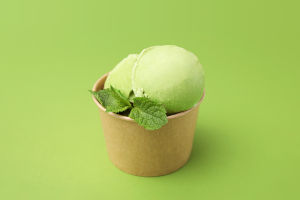Kimchi, the spicy, tangy, and flavorful fermented side dish from Korea, has taken the world by storm. Known for its vibrant flavors and health benefits, Korean kimchi is more than just a food — it's a cultural symbol that embodies the heart and soul of Korean cuisine.
Dear Lykkers, if you’re new to this flavorful delight or a seasoned kimchi lover, there's so much to explore in the world of this fermented masterpiece.
1. What is Kimchi?
Kimchi is a traditional Korean dish made from fermented vegetables, most commonly napa cabbage and radishes. It’s seasoned with a variety of ingredients, including chili powder, garlic, ginger, and fish sauce, which give it its characteristic spicy and umami-packed flavor.
Fun Fact: There are over 200 varieties of kimchi, each with its own unique blend of vegetables and seasonings!
2. The History Behind Kimchi
Kimchi has been a part of Korean cuisine for centuries, with its origins dating back to as early as 37 BCE. Originally, kimchi was a simple pickled vegetable dish made to preserve food for the harsh winters. Over time, the introduction of red chili peppers during the 17th century transformed kimchi into the spicy version we know today.
Did You Know? In Korea, kimchi is so essential that families often prepare large batches to store for the winter months in a tradition known as "kimjang."
3. Health Benefits of Kimchi
Kimchi is often hailed as a superfood thanks to its numerous health benefits. Packed with probiotics, vitamins, and minerals, this fermented dish is not only delicious but also excellent for your gut health.
Here’s Why Kimchi is Good for You:
Probiotics: The fermentation process creates beneficial bacteria that support a healthy digestive system.
Rich in Vitamins: Kimchi is high in vitamins A, B, and C, essential for maintaining overall health.
Boosts Immunity: The antioxidants in kimchi help fight inflammation and boost your immune system.
Low in Calories: It’s a low-calorie food, making it a perfect side dish for weight management.
4. How to Enjoy Kimchi
While kimchi is traditionally served as a banchan (side dish) alongside a variety of Korean meals, its versatility means it can be enjoyed in countless ways. From topping off your rice and noodles to being incorporated into stews and pancakes, kimchi adds a zesty punch to any dish.
Popular Dishes Featuring Kimchi:
Kimchi Jjigae: A hearty stew made with meat, tofu, and kimchi.
Kimchi Bokkeumbap: Kimchi fried rice, a quick and easy way to use leftover kimchi.
Kimchi Jeon: Savory pancakes made with flour and chopped kimchi.
5. Making Kimchi at Home
If you're feeling adventurous, making kimchi at home is easier than you might think. All you need are the basic ingredients — napa cabbage, salt, garlic, ginger, and Korean chili flakes — and some patience. The key to good kimchi is letting it ferment long enough for the flavors to develop.
Pro Tip: Store your kimchi in a cool, dark place for at least a week to allow it to ferment. The longer it ferments, the tangier and more complex the flavor will become!
Traditional kimchi recipe (Tongbaechu-kimchi: 통배추김치)
Video By Maangchi
6. Kimchi in Korean Culture
Kimchi is more than just food in Korea; it’s a cultural symbol. It represents resilience, family, and tradition. The annual Kimchi Festival in Gwangju, South Korea, celebrates the art of kimchi-making, where people come together to honor this beloved dish and share in the communal experience of kimjang.
Interesting Fact: South Korea even has a Kimchi Museum in Seoul, dedicated to preserving the history and culture of kimchi.
Korean kimchi is a culinary treasure that has stood the test of time. With its rich history, health benefits, and endless versatility, it’s no wonder this fermented dish has captured the hearts of food lovers worldwide. No matter you enjoy it on its own, in a dish, or experiment with homemade recipes, one thing is for sure — kimchi will continue to spice up our plates for generations to come!


